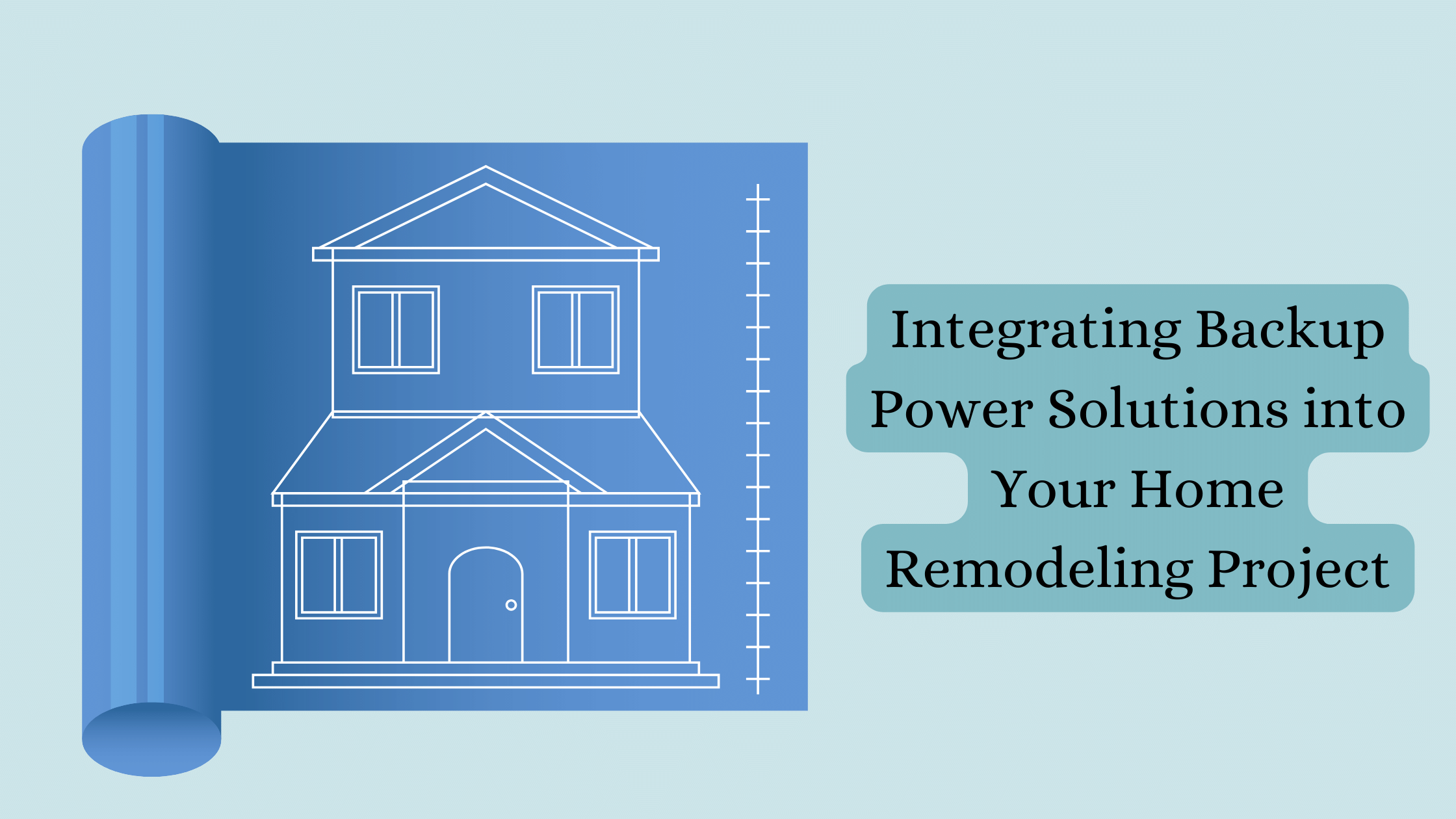
In the world of home remodeling, one area that tends to go unnoticed is the incorporation of backup power systems. However, the significance of a stable power supply before and beyond a home renovation must be emphasized. Whether used to power essential appliances during a blackout or to ensure that your house is still functional and comfortable, a backup power solution is an invaluable part of your home renovation project. This blog post provides a detailed account of why it is vital to include backup power solutions in your home and concentrates on home backup generators while discussing simple ways to integrate these systems easily.
The Necessity of Backup Power Solutions
Home renovations perfect the occasion of multiplying your living space’s functionality, suitability, and safety. On the other hand, despite the joy of picking the right looks and finishes, the practicalities of installing a reliable backup power plan are commonly not considered. The power outages that come about as a result of natural disasters or as a part of electrical work can bring your life to a halt, primarily if you work from home or have a piece of advanced medical equipment that needs some electricity to function. Backup power systems, such as generators, allow your home to continue working usually without exposing it to the hazards and inconveniences of power disruptions.
Backing power solutions during the renovation process is not simply handling the unlikely, but in fact, how it is being planned. Additionally, it will raise the property’s value, may add to the energy efficiency, and can sometimes reduce the insurance premiums. This is, therefore, the most significant advantage because it gives a sense of calmness by knowing that your home is always safe and well-secured, even during power disruptions.
Planning for Integration
To be able to include a generator as a part of your home renovation, you have to think and plan very seriously. The process will kick off by analyzing your power usage. This is a process of making decisions about the appliances and systems you consider essential, especially during that time. They include refrigeration systems, best medical equipment, heating and cooling systems, and lighting galore. In this substantiation, you can select a generator that will give you the power you need without overpaying for a compelling model.
The type of generator to pick impacts the fuel type, the capacity, the noise, and the location of the installation. Gas and propane are widely used for generators as they are easy to operate and cost less than gasoline-type models. Be sure to size the system based on the overall wattage needs of all the appliances you would like to run. Moreover, in the case of noise for the urban and residential ones, you have to be aware of the option of having a generator with noise reduction and features that will not disturb your family or the neighbors.
The generator of a house should be appropriately embedded in the home’s architecture to be practical and attractive. Generators tend to be both large in their physical presence and obtrusive to the public view. Thus, you need to engage the services of architects or contractors in your search for a public yet accessible installation location it can be at the sides of the house, in the backyard, or even underground, but air ventilation has to be available to achieve this.
An Unrivaled Match to Home Design
Coordinating the planning with the owners, architects, and contractors is critical to a successful backup power system that fits your house design. For example, the generator can be conceived as an element of the urban landscape by putting a fence around it or planting trees to remain accessible while it is not visible. The other option is to reserve a dedicated area within the garage or near the laundry area with fresh air and possible exhaust systems for carbon monoxide to disappear.
The other important thing is using mixed technologies. This entails the attachment of the generator to the house’s electric panel with the branch connected to your electrical panel through a transfer switch that automatically switches your home power from the utility to the generator during an outage. A qualified and licensed electrician must be employed by a certified firm is the requirement to enable the adoption of regulations and to ensure maximum efficiency and safety.
Conclusion
The matter of backup power solutions in your home remodeling project is more than just convenience; it’s a thoughtful decision to uplift your home’s security, resilience, and market value. Planning for its integration from the very beginning would help you realize that a generator or any other backup power system is not only for making the renovated house beautiful and functional but also to prepare the house to handle any power failure with confidence. However, perfect integration entails thoughtful planning, picking the correct equipment, and professional installation. As with the case of your home’s energy security during a renovation, you’re being enlightened to take peace of mind and steadiness of your home as part and parcel of the investment for years to come.